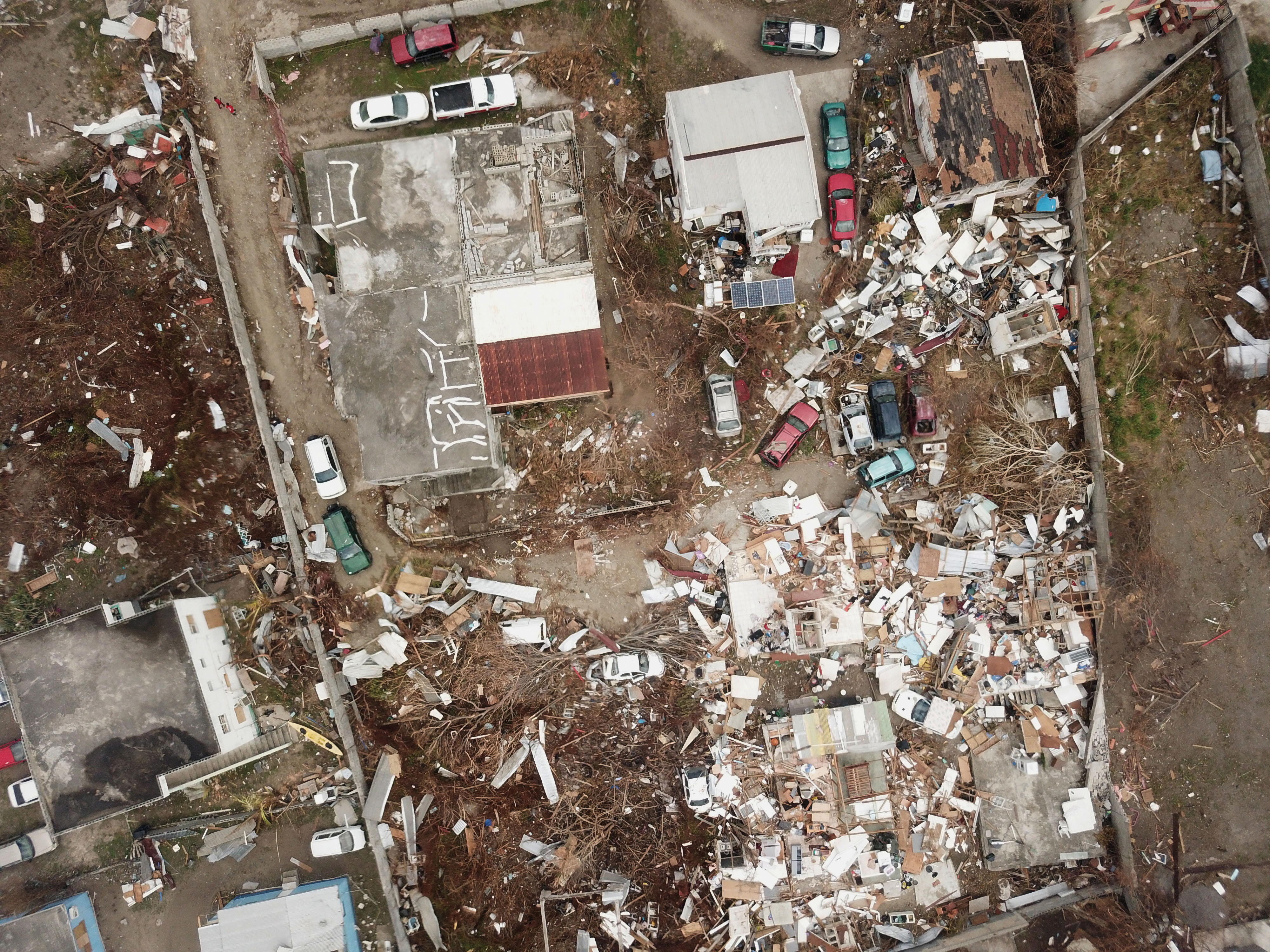St. Maarten after Hurricane Irma. (Climate Centre)
Natural disasters can be crippling for tourism-dependent economies, but healing is possible.
After bathing in their swimming pool, which was full of debris, Ben and Elizabeth Zenger handed their car keys to a stranger and took one last picture in front of their battered home.
Hurricane Irma had shattered the paradise of St. Maarten, where the couple and their daughter, Maggie, were living for medical school. The Zengers were miraculously protected during the storm, but they lost all of their belongings and were forced to relocate. Ben and the other medical students will continue their schooling elsewhere and will not return to St. Maarten.
St. Maarten is a 16-square-mile Dutch territory on an island in the Caribbean. St. Maarten’s official tourism website (www.vacationstmaarten.com) describes the destination as a “magical place,” a place “where European sophistication and raw island passion have fallen in love.” Sadly, the Category 5 hurricane left this magical place ruined and, in some areas, almost uninhabitable.
When the Zengers left their island home, they did not have an opportunity to say goodbye to friends. They and other United States citizens—including Elizabeth’s sister and brother-in-law, who were visiting when Hurricane Irma hit—were flown off the island as quickly as possible following the storm. The St. Maarten international airport was damaged in the hurricane, so military transport planes took these citizens back to the United States. As the Zengers left, Elizabeth posted a plea on Instagram for everyone to pray for the people of St. Maarten and continue to show them love as they try to recover from this tragedy.
Some island residents wonder if complete recovery is even possible. In an NPR report after Hurricane Irma, one citizen said, “We all survived this monster storm. But will we survive the aftermath?” In addition to losing their homes and belongings, many of the people of St. Maarten lost their source of income. Tourist industries make up most of the island’s economy, and the devastation of natural disasters results in a major decrease in tourism.
St. Maarten is just one Caribbean location with an economy heavily dependent on tourism. Many other islands also rely on tourists to keep them financially stable. Some of these islands suffered as much as or more than St. Maarten during the 2017 hurricane season.
Hurricanes devastated coastal regions in 2017, but that was neither the beginning nor the end of natural disasters in the world. And Caribbean islands are not the only place so financially dependent on tourism. What can you as a traveler do to help in the aftermath of such terrible events?
First, thoroughly research your possible travel destination and how it has been impacted by natural disaster. Be aware of what’s going on and how you might be able to help once you arrive. Could you contribute manual labor on a service project? Are there areas you should avoid in order to be respectful to residents? Don’t be a burden to the community, and never travel somewhere just to get a good look at the damage.
When asked how travelers could help the island, Elizabeth said, “Be sensitive and kind to the locals. Honestly, there are no words for what some of the people have gone through and how quickly their lives have changed.” Remember that the citizens are real people who have suffered immensely and are trying to heal.
Second, if you do travel to places affected by natural disaster, support the local economy. Some businesses (possibly fast food chains and large hotel chains) are not financially rooted in the community—their money goes elsewhere, to a large corporation, instead of back to the local government and citizens. Your patronage at these places won’t help the community rebuild and recover from the disaster. Websites such as www.wttc.org and www.responsiblevacation.com can guide you in making responsible and helpful travel plans.
Also recognize that damage in one area does not mean that travel to surrounding areas is impossible. You can support regions that have been impacted by natural disasters by effectively researching which ones you can travel to. Some of them will still be functional, and traveling there can help to keep the tourism industry alive. Visiting these places might even help the more devastated areas recover more quickly.
Finally, don’t forget about these places once the news coverage stops. The horror of hurricanes, earthquakes, and tsunamis shouts at us from photos and videos on the television and internet. But the tragedy of a lost economy is quiet, especially once the media moves on. These places will still need your support and your tourism to help them recover and, one day, thrive again.
Be a conscientious traveler. Next time you’re looking for a vacation spot, make informed and deliberate choices by considering how your travel will affect economies, communities, and people. Remember that we live in a global community and share human experience. The World Travel and Tourism Council encourages us to “embrace travel as a means to unite in our common humanity.”

(nvainio)
As we recognize our common humanity and create opportunities to help others rebuild after tragedies, we will help communities heal from natural disasters and see growth once again. In an interview with NPR following Hurricane Irma, Reverend Jeff Neevel said of his home in St. Thomas, one of the United States Virgin Islands, “There’s hardly a tree left or a leaf left if the tree’s standing. But even some of the smaller ones already are budding. . . . There [are] signs of new life . . . and that’s hopeful.” Your contribution to the tourism industries in places like St. Thomas and St. Maarten can be like the buds appearing on storm-torn trees.
—Alyssa Hazen
Sources

